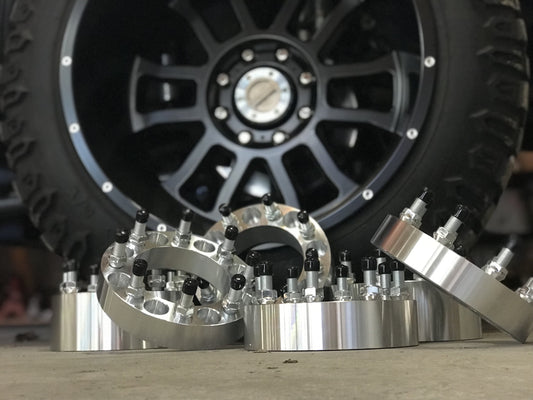Understanding the ins and outs of a turbocharger can provide useful insights into your vehicle's performance. This performance-enhancing component elevates your engine's speed and efficiency. Let's start with the basics.
The Short Answer: The parts of a turbocharger include…
- Turbine
- Compressor
- Bearing system
- Center Housing
- Compressor Inlet
- Compressor Outlet
- Turbine Inlet
- Turbine Outlet
- Oil Inlet
- Actuator
In the sections that follow, we will unpack the details of what makes up a turbocharger and how the different parts work together in harmony. This article will help give you the knowledge needed to maintain your vehicle's turbocharger or decide on whether a turbocharger upgrade is right for you in the first place!
Core Components of Turbochargers
Turbochargers are complex structures, with an intricate design focused on maximizing power and efficiency. Let’s take a detailed look at some of the core parts of turbochargers.

Engine Interaction with the Turbocharger
The turbocharging process starts with the engine, the heart of your vehicle. The role of a turbocharger is to enhance the engine’s efficiency by forcing more air into its combustion chamber. Each time you ignite the engine, exhaust gases are produced.
Center Housing
At the center of the turbocharger system is the center housing, which contains the bearing system. Here it serves as a hub, connecting the turbine and compressor wheels. The bearing system within it helps reduce friction, enabling the smooth rotation of the wheels.
Exhaust System & Turbine Drive
A key part of any turbocharger is the exhaust system. The produced exhaust gases are funneled to the turbocharger through the exhaust system, specifically to a turbine wheel. The pressure of these gases causes the turbine to spin, harnessing what would have been wasted energy.
Compressor
On the same shaft as the turbine wheel is the compressor. The spinning of the turbine, driven by exhaust gases, also causes the compressor to rotate. This compresses the incoming air, increasing its density, thereby enabling the engine to mix more air with fuel, which significantly enhances combustion efficiency and power output.
Intercooler
With increased compression, the air tends to heat up. This is where the intercooler steps in. This key component cools down the compressed air before it enters the combustion chamber, ensuring a uniformed and controlled combustion process.
So, from the engine to the exhaust system, each of these components play their specific roles in creating the turbocharge effect. By enabling the components to work together seamlessly, turbochargers provide a significant boost in vehicle performance while maximizing efficiency.
Secondary Turbocharger Components
There are more components beyond the major parts of a turbocharger that are equally essential to its operation and performance. These components complement the primary parts, contributing to the overall function of the turbocharger unit.

Turbine & Compressor Inlets
The compressor inlet draws ambient air into the compressor to be pressurized, while the turbine inlet channels exhaust gases from the engine to drive the turbine. Both inlets are designed to maximize efficiency by ensuring smooth and optimal flow of air and gases, crucial for enhancing the turbocharger's performance and the engine's overall power output.
Turbine & Compressor Outlets
Once the turbocharger has done its work of compressing the air and funnelling exhaust gases, these elements need to exit the unit. Here's where the turbine and compressor outlets come in handy. They are designed to guide the flow of gases and air safely away from the turbocharger, contributing to its performance and efficiency.
Oil Inlet & Actuator
Another critical part of the turbo manifold is the oil inlet. As the turbocharger operates at high speeds and temperatures, it needs constant lubrication. The oil inlet facilitates the flow of engine oil to the turbocharger, minimizing friction and preventing overheating.
Then there is the actuator. Attached to the turbine housing, the actuator helps regulate pressure within the turbocharger. By opening and closing the turbocharger’s waste gate, it ensures optimal pressure levels are maintained at all times.
The Turbocharger's Role in the Torque Converter
Finally, the turbocharger interfaces with the torque converter, especially in automatic vehicles. The torque converter transfers the generated power from the engine (and turbocharger's boosted power) to the transmission while allowing them to spin independently. This integrated operation creates the enhanced performance that turbocharged vehicles are often recognized for.
In summary, these lesser-discussed parts help turbochargers maintain top-notch performance by allowing each component to do its job effectively. By better understanding these parts, you’ll be more equipped to maintain your turbocharger’s health and longevity.
Far From Stock: Ensuring Peak Turbocharger Performance
Maintaining the optimal performance of your turbocharger involves routine checks, attentive care to all components, and prompt replacement of parts when necessary. This ensures a seamless driving experience with your turbocharged vehicle. But knowing about a turbocharger's makeup is just the start. It all comes together when you have quality turbocharger kits and parts, ensuring reliability and lasting performance. At Far From Stock, we not only understand turbochargers, we design high-performance turbos that will elevate your ride.
Ready to turbocharge your ride? Check out our turbos collection today!





